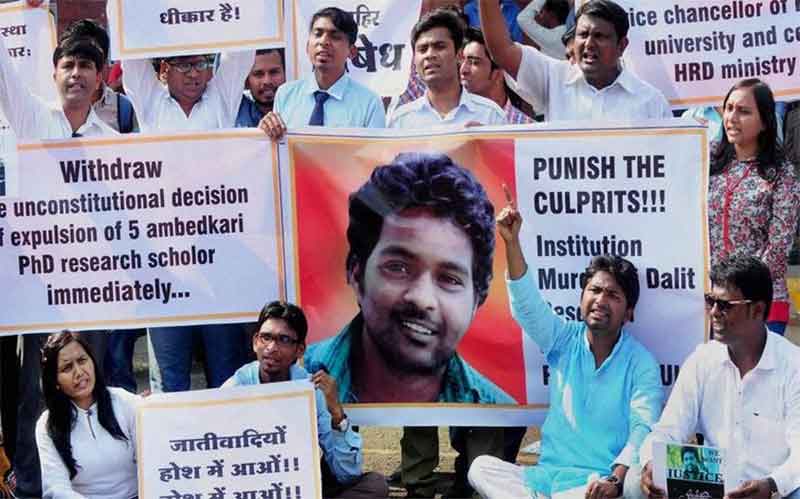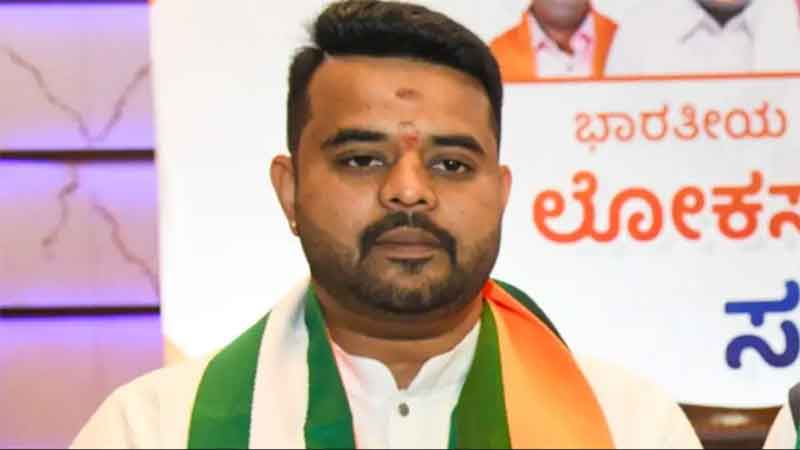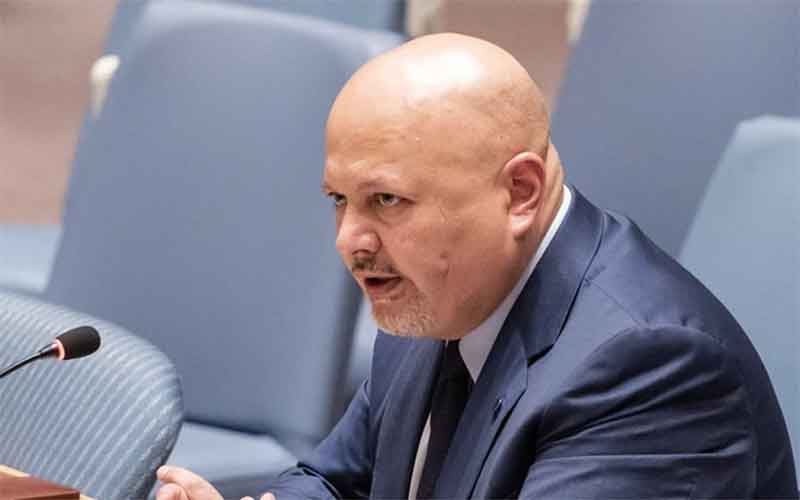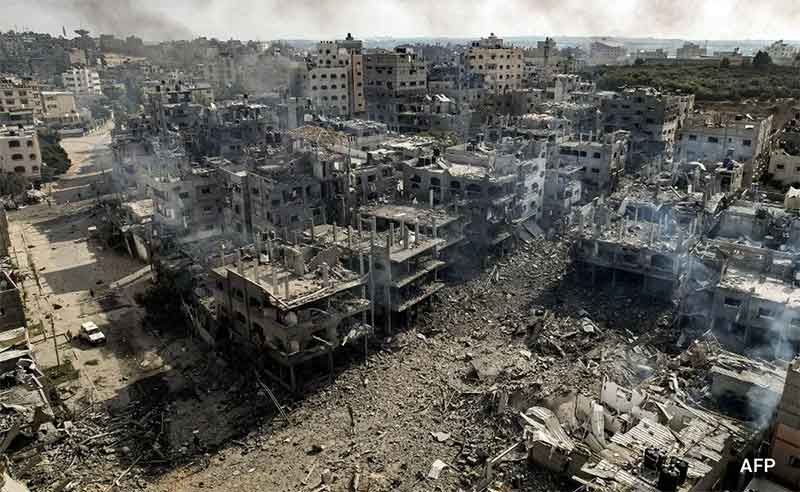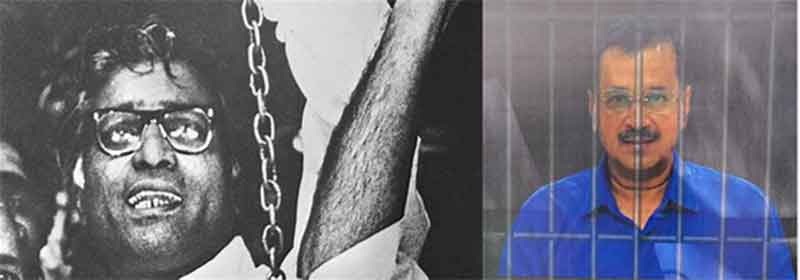
On June 8, 2018, RS Narayanan, a farmer in Kuppanur village in Salem district got into an argument with officials asking them why they were marking fields without giving any farmer a notice or telling them how much they will get for the land.
“The next morning, at 4 am, a police team came home and picked me up. Till 1 pm, I was detained at the police station. Is it a crime to ask questions? No one tells us anything, no one is bothered about our problems. If you ask or object, you get arrested. We are being intimidated,” bemoans Narayanan, the Firstpost reported.
The 8-lane highway is a mega-project. At Rs 10,000 crore, the estimated cost of the 277-km long road, and based on a recommendation by a World-Bank-blacklisted consultant. Big projects have big impacts, both positive and negative. While positive impacts generally affect the general public, the negatives more often are localised.’
The 277.3 km proposed Greenfield corridor starts from Chennai Ring Road in Vandalur and ends at NH-544 bypassing Salem. The proposed alignment passes through Kancheepuram (59.1 Km), Tiruvannamalai (123.9 Km), Krishnagiri (2 Km), Dharmapuri (56 Km) and Salem (36.3 Km) districts. The project also envisages construction of three bypass roads each at Kancheepuram (30 km), Chetpet (4.7 km) and Thiruvannamalai (16 km).
| Land Requirement | 2791 hectares |
| Nature of Lands | Farmland, Forest, Residential, Poromboke commons |
| Route | Salem, Dharmapuri, Krishnagiri, Thiruvannamalai, Kancheepuram, Chennai |
| No. of Villages along Alignment: | 854 |
| Access Points | 8 locations with toll booths |
Kancheepuram – agriculture (47%) is the main occupation of the people. Paddy is the major crop cultivated in Kancheepuram district. Palar river along with tanks and wells are the main sources of irrigation. And, it is also one of the most industrialised districts in the country with many automobile manufacturers such as Hyundai, Nissan, Ford, BMW, Daimler, thanks to its proximity to Chennai.
Tiruvannamalai – is one of the country’s 250 most backward districts (out of a total of 640) and one of the six districts in Tamil Nadu currently receiving funds from the Backward Regions Grant Fund Programme (BRGF), government plans to set-up 250 acre hi-tech SEZ for automotive components, a 300-acre electronics hardware park and has a commitment from the Taiwanese Shoe Company to set up its unit. It will pass through five reserved forests and the initial estimate is that it may need over five acres of forest land.
Krishnagiri – is a highly industrialised district. SIPCOT has already developed one of the largest industrial complexes in the country in Hosur in over an area of 1,370 acres and to develop Large/Medium/Small industries with SIDCO offering comprehensive services for more than 500 industries. The industries in Hosur are the source of raising the standard of living of people in Krishnagiri district. It is producing goods varying from pins to aeroplanes.
Dharmapuri – is predominantly covered with forests. Spider valley located near Hogenakkal is home to many wild animals. The district also falls in the migratory path of elephants. While farmers argue that the 37-km stretch from Ariyanur to Manjuwadi Pass on the Dharmapuri district border — a lush belt of coconut and areca nut farms, paddy and horticulture fields — will be adversely impacted once the project gets underway.
Salem – is one of the fastest growing Tier II cities, the government and ELCOT are planning to establish an IT park covering about 160 acres. SAIL is planning a Steel SEZ inside Salem Steel plant covering about 250 acres and there is an exclusive Electrical and Electronics Industrial Estate in Suramangalam in Salem city. The project will require about 3.5 acres of land in two reserved forests.
Demerits of the project –
- According to draft feasibility report, 2,791 hectares have to be acquired from five districts, of which 1,229 hectares would be acquired from Tiruvannamalai district.
- The lands to be acquired are mostly agriculture fields.
- It will affect 120 hectares of forest land and cause irreversible damage in eight reserve forests.
- It has to pass through seven rivers.
- Proposed Greenfield Highway with closed toll policy system is difficult to access for a common man
The merit lies in the expansion of existing roads such as Chennai–Krishnagiri–Salem route (345 km) and Chennai – Ulundurpet–Salem route (313 km). Since roads are already present, there is no structure affecting and land acquisition. All existing routes are either no access/partial access controlled, the connectivity is much higher to the villages/town along its path. There is no forest land acquisition.
Timeline
In September 2017, Phase 2 of the Bharatmala project was born when a Request for Proposals (RFP) was published by the National Highways Authority of India (NHAI). The RfP for “Consultancy Services for preparation of DPR (detailed project report) for development of Economic Corridors (GQ and NS-EW Corridors) to improve the efficiency of freight movement in India under Bharatmala Pariyojana (Lot 6)” covers eight projects in Tamil Nadu. The 8-lane Salem Chennai expressway proposal is not among them.
The project which claims to be part of the Bharatmala Pariyojana of the Government of India finds no mention in any of the publicly-available policy documents prior to February 2018.
Neither does the Salem-Chennai road proposal find mention in the list of Phase 1 projects cleared on October 24, 2017, by the Cabinet Committee on Economic Affairs as part of the Phase 1 Bharatmala scheme. The approved list was published by the Union Ministry of Road Transport and Highways (MoRTH) on October 25, 2017, where it announced the launch of projects worth Rs. 5,35,000 crores by end of 2018. Only 800 km of Greenfield Expressways are covered in Phase 1. The only project involving Tamil Nadu is the Chennai Bangalore Expressway for which RfP was published as early as in October 2008.
On November 23, 2017, the Government of Tamil Nadu published a press release highlighting, among other things, its request for amendments and new inclusions to the projects proposed under Sagarmala Pariyojana. The note talks about Salem’s centrality to the State’s economy, and proposes the inclusion of Bangalore – Hosur – Dharmapuri – Salem – Namakkal – Karur – Dindigul – Madurai section of NH7 (new No. 44) in the priority list prepared by MoRTH for upgradation from 4 lanes to 6/8 lane. Additionally, it also requests the upgradation of the Salem to Chengapalli (near Coimbatore) and Coimbatore to Kochi to 6-lane standards. The 54-page document makes no mention of the 8-lane Salem Chennai Expressway.
The first mention of the Expressway in any publicly available document seems to be in a letter dated February 23, 2018, from Feedback Infra Pvt Ltd (FIPL) to the Project Directors of NHAI at Chennai, Salem, Krishnagiri and Villupuram announcing its intent to conduct a traffic survey on February 26, 2018 for the “Chennai-Salem Expressway.” The letter even contains a map showing the proposed alignment, including the proposed locations of toll plazas.
On February 24, 2018, a day after receiving FIPL’s letter, the NHAI responded to FIPL’s letter instructing its project managers and team leaders to coordinate with the consultant to carry out the traffic survey.
It is only on February 25, 2018, that the Chief Minister of Tamil Nadu wrote to Union Minister Mr Nitin Gadkari suggesting that “a Green Express Way Corridor between Salem and Chennai cities be formed.”
On the same day, at a joint press conference with the Tamil Nadu CM and Gadkari declared, “The access-controlled green expressway corridor between Salem and Chennai along the stretch of 274 km will come up at a cost of Rs 10,000 crore. The process for the green expressway is put on the fast track. Tenders will be floated in two months.”
Project Feasibility Report (PFR)
A PFR assesses the feasibility of a proposal by evaluating its technical and economic viability. By virtue of their implications on the cost and desirability of a project, environmental and social assessments become integral components of such feasibility assessments.
The project feasibility report shall consist of –
Stage I
- Draft Inception Report including QAP document
- Inception Report including QAP document
- Draft Alignment Report
- Final Alignment Report
Stage II
- Draft Feasibility Study Report including option study report
- Final Feasibility Study Report incorporating compliance of comments of Client
Stage III
- Draft LA and Clearances I Report
- Final LA and Clearances I Report incorporating compliance of comments of Client
Stage IV
- Draft DPR
- Final DPR incorporating compliance of comments of Client
Stage V
- Draft Technical Schedules
- Final technical schedule
Stage VI
- LA and Clearances II Report
Preparation of Land Acquisition Report consisting of a kilometre-wide land acquisition plan with a schedule of ownership, costs as per revenue department and realistic costs; copies of draft notifications under Section 3a and 3A of the NHAI Act.
The Land Acquisition report is required to be prepared in consultation with affected persons, NGOs and concerned government agencies. The Land Acquisition Report is to be prepared only after approval of Feasibility Report and is also required to present Draft Government Orders for notifying Competent Authorities for Land Acquisition (Section 3a of NHAI Act) and for announcing intent to enter and survey lands (Section 3A of Act). It is only after receiving and approving the Land Acquisition Report that notifications under Sections 3a and 3A of the NHAI Acts are to be made.
According to NHAI’s Schedule for Submission of Reports and Documents, it takes 3 months to get to the stage of finalisation of Feasibility Report, and 135 days — more than 4 months – to get to Land Acquisition Report stage. It is only after this stage that Government Orders to notify Competent Authorities and to enter and survey lands are made.
However, this sequence does not seem to have been followed in the case of the 8-lane project. Within a month of the CM “suggesting” the project, on March 28, 2018, a Government Order announcing the Competent Authority under Section 3a of the NHAI Act was published. In the months that followed, Government Orders calling for objections to the proposed acquisition were published, possibly in violation of procedure.
No local consultations have been conducted for the preparation of either the Feasibility Report or the Land Acquisition Report. This is in violation of mandatory procedure. However, the consulting firm claims to have completed public consultation. Chapter 11 of the Feasibility report is dedicated to “Initial Social Impact Assessment”.
The DPR has its demerits and demerits. Because some of the parts in the Social Impact Assessment Report are highly plagiarised to the extent that it has a mention of Xi’an, a city in Shaanxi province of China. The relevant part is “11.7 GENDER AND DEVELOPMENT 1. What are the key gender issues in the sector/subsector that are likely to be relevant to this project/program? The Project will enhance the urban road network and public transit system, which benefits women and men equally. The mobility of women in Xi’an is already very high and the Project will enhance the quality and frequency of transportation services in a safer manner. The main issue is to ensure women are well represented in the consultation process during project design and implementation. This can be addressed in the C&P Plan.” So, the Salem-Chennai Highway will have positive impacts on the lives of women in China.
A draft feasibility report prepared by a consultant FIPL[1] concluded that the project is ‘socially feasible’. According to the Detailed Project Report (DPR), it is expected to reduce the transportation cost of vehicles by 15 to 20 %. A preliminary estimate shows, the traffic from Salem-Ulundurpet-Chennai route is around 8,000 to 10,000 passenger carriage units (PCU), Salem-Harur-Vellore route is 4,000 to 5,000 PCU and Salem-Krishnagiri-Chennai route is around 4,000. “The travel time from Chennai to Salem can be reduced from 6 hours 26 minutes to 3 hours 9 minutes with the 8-lane greenfield express highway.”
The estimated the travel cost of a car via the Chennai–Krishnagiri–Salem route over 345 km at Rs 2913.92, while the cost via the Chennai – Ulundurpet–Salem route over 313 km stood at Rs 2623.07. However, the cost of car travel via the proposed Chennai–Salem corridor would be around Rs 2237.36, the report says.
The operating cost of a bus via the proposed green corridor was estimated at Rs 5636.13, while the vehicle’s cost via the other two routes stood at 6840.50 and6190.90 respectively, the report says.
The report ends with a section titled “Identification of Issues” which makes it seem as if people welcome the project, have some minor apprehensions and are eager to see the project completed in record time. However, the part 7 on page 271 says that “Many people worried whether the work will be taken up due to political conflicts. The construction work should be taken up on an urgent basis, rather than conducting surveys again and again.”
Impact of land Acquisition
The total land to be acquired is 2791 Hectare consists of agricultural land, community land under Chennai Corporation/ Panchayats, various structures of public interest, residential structures and residential plots, public utilities and others.
The feasibility report also suggests that the land acquisition is governed by the Act of 1894. “11.11.2 Land Acquisition Act, 1894 In India, compensation for land acquisition and resettlement assistance for project affected people are governed by the Land Acquisition Act (1894), which has been amended from time to time”. Section 105 of the LARR Act, 2013 provides that, “Provisions of this Act not to apply in certain cases or to apply with certain modifications.–(1) Subject to sub-section (3), the provisions of this Act shall not apply to the enactments relating to land acquisition specified in the Fourth Schedule”. The National Highway Act, 1956 is on the fourth schedule, but the Land Acquisition Act, 1894 is not on the list, because the LARR Act, 2013, itself is a replacement of the Act of 1894. The Acquisition should be done either under the LARR Act, 2013 or National Highways Act, 1956.
Firstpost reported on June 19, 2018, that some farmers are getting compensation at the rate of Rs 8 lakh for an acre. The market rate is around Rs 60 lakh per acre.
The Madras High Court August 22, 2018, restrained the Centre and Tamil Nadu government from dispossessing people of their lands to be acquired for the proposed eight-lane highway project between Salem and Chennai till further orders.
“The respondents are directed not to dispossess the respective landowners from the land in question, which they propose to acquire until further orders in these writ petitions,” the order says.
The project can be implemented, if:
- Just, fair and reasonable compensation to be given to the farmers and land owners.
- The government provide for rehabilitation & resettlement to the people whose homes would be acquired and land would be acquired.
- At least 1 family member of the farmer or landowner must be given government employment.
- Ensuring that the number of trees cut is down to minimum and detail impact assessment report is done at the behest of the independent governmental agency.
- Social Impact Assessment shall be done with due process, provided under the LARR Act, 2013.
- Involvement local labourer is must as much as possible in the construction & management of the highway.
Nilesh Jain is a student of Master of Laws at Delhi University. He is also a researcher at Swaraj Abhiyan.
[1] FIPL, is blacklisted by the World Bank. A World Bank press release on the subject reveals that “while executing a construction supervision contract under the Lucknow-Muzaffarpur National Highway Project, Feedback’s staff recklessly verified, and certified for payment, three invoices submitted by a contractor that made false materials advance claims, based upon fictitious steel purchases.” It is not illegal for the MoRTH to work with consultants who have been blacklisted by the World Bank. According to the source, the Supreme Court had held that even blacklisted consultants can respond to Requests for Proposals as long as the RfP does not debar the consultant by specifically naming it.










